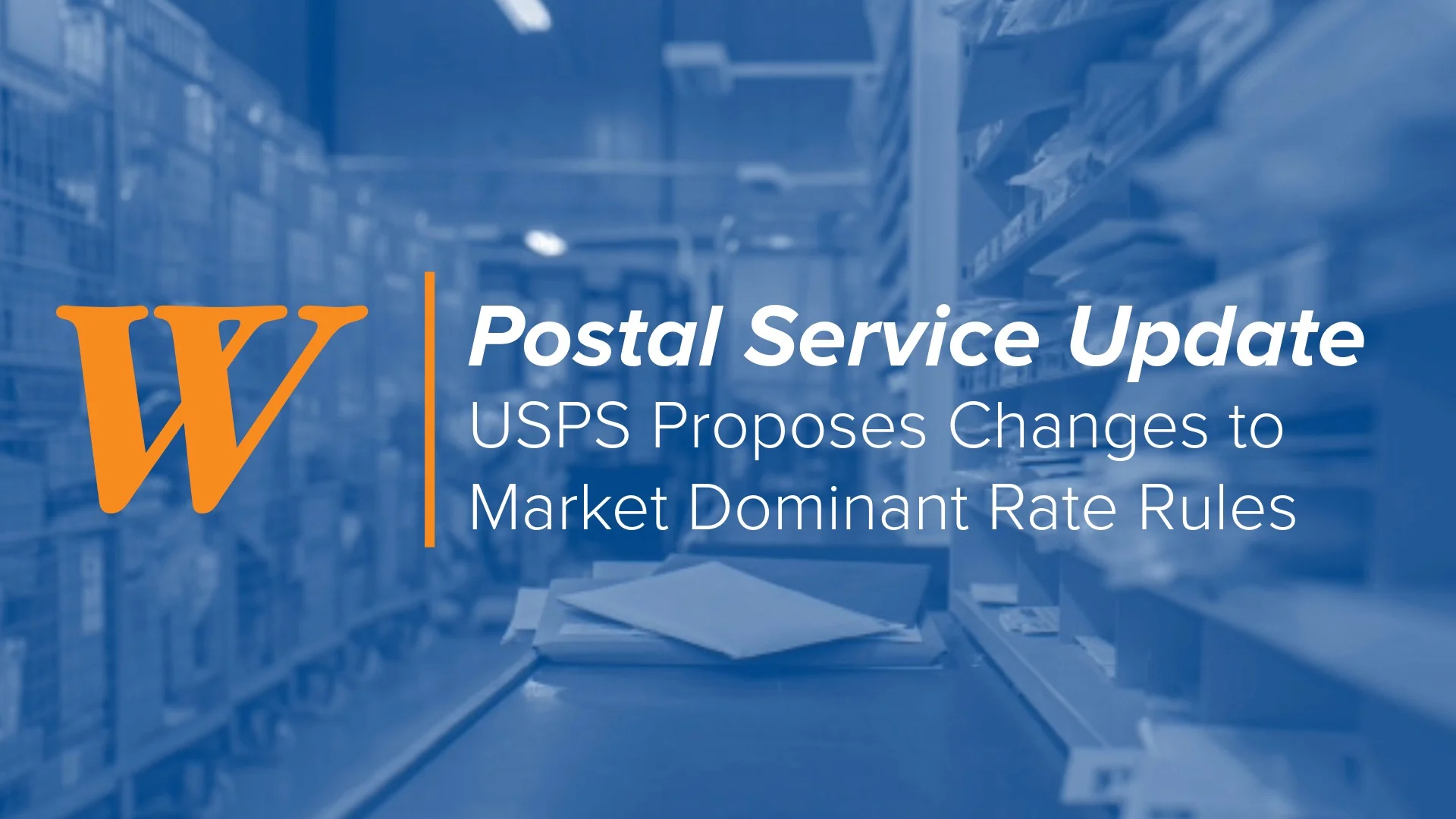Walsworth’s Customer Service Department serves a vital role in ensuring good customer experience.
“We’re the liaison between the customer and the manufacturing plant,” said Jake Pschigoda. He oversees the Customer Service Department at Walsworth’s Saint Joseph, Michigan facility, which is primarily focused on magazine and catalog manufacturing.
They receive orders from customers and enter jobs into the system, flowing them through manufacturing. The Customer Service Department ensures all job specifications are clear so the customer’s expectations can be met at all stages of the manufacturing process. The department fields phone calls and emails from customers. They handle manufacturing, mailing and distribution queries, and the times “things go awry,” as Pschigoda put it.
The department is comprised of 12 customer service representatives. Alicia Coard is their supervisor.
 Pschigoda estimates they interact with 375 customers in a year, but they process and facilitate nearly 4,000 print jobs for those customers, so they cater to a wide array of needs and field a lot of questions.
Pschigoda estimates they interact with 375 customers in a year, but they process and facilitate nearly 4,000 print jobs for those customers, so they cater to a wide array of needs and field a lot of questions.
Pschigoda and Coard shared the topics they most often deal with and provided answers to some of their frequently asked questions.
Let’s start by talking about the new-customer onboarding process. What is it?
Jake Pschigoda (JP): Basically, what we’re addressing with the onboarding process is how to bring on a new customer or transfer a customer from plant to plant smoothly and without customer frustration.
We use the onboarding process to ensure we’re aware of a customer’s hot buttons and that we understand a customer’s requirements and expectations.
We have onboarding tools that help us capture the customer’s background and preferences. We request samples of a customer’s previous printings. And we conduct phone calls to introduce key people from Walsworth to the customer’s staff and discuss all the manufacturing specifications to make sure everyone is on the same page.
All of this helps us get customer buy-in for the what we’re going to do and to identify potential problems before we get rolling.
After our first job or two, we conduct post-production reviews as necessary to identify any possible areas for improvement.
Alicia Coard (AC): The whole goal is to make the customer feel like they made a good choice coming to Walsworth and want to stay with us forever.
What are some of the questions you ask a customer during the onboarding process?
JP: We ask about various topics like, do you want overs and unders, and do you have any special delivery requirements.
AC: And we request test files from the new customer, so we can run the pages through our pre‑press department and make sure there are no issues before we actually get a live job.
We also request mail data files for customers who we’ll be mailing for. This prevents issues when we actually label their publication and mail it.
It’s always helpful to have test files ahead of a live job.
You mentioned test files. How do they work?
AC: The customer sends us a sample of their publication in file format, and we run it through our technical support department to make sure there won’t be any printing issues regarding bleed allowances, low-resolution images or trapping issues.
We also train customers how to use InSite, our online portal where customers can submit their page files and cover files, and where they can review and approve soft-proofs. Some customers are very familiar with it and others need training.
The benefit to submitting test files is, when the actual job files come in, there aren’t any delays due to technical issues.
What’s the difference between a customer who is experienced with print manufacturing and a customer who is completely new to the business?
JP: There’s a big difference. Alicia mentioned the creation of files and use of our online proofing system. A customer who’s been around a while will have used InSite, which is probably the most popular system in the industry.
For customers who haven’t printed before, we go over all the programs they’ll be using, the files they’ll be submitting, how InSite interacts with those files, how to navigate through the system, how to name files so it makes sense to everyone (i.e. is the cover page one, or the first page of text page one?), etc.
We give a lot of help to first-time print customers, and team up to make sure we understand each other and are communicating well.
That’s how we help customers be successful.
What is web growth?
JP: Web growth typically happens when publication covers are printed on a sheetfed press while the publication pages are printed on a web press.
The amount of moisture in the paper of the covers doesn’t change much when printed on a sheetfed press. But the moisture in pages printed on a web press can change a lot due to the oven used on web presses to dry ink.
Once the pages and cover are bound together and trimmed to size, the paper of the pages, which were dried in the oven on the web presses, absorb moisture from the air and grow in size. The paper of the covers produced on the sheetfed press don’t absorb more moisture, so they don’t grow. The result can look like they were trimmed at different sizes, and this is what is commonly referred to as web growth.
How do you address the issue of web growth?
JP: Sales reps usually address this with their customers so they know what to expect. Reps recognize when it might be an issue for a customer and bring it up during the sales process.
AC: And many customers have enough experience that they already know and understand web growth. When we quote a job, we’re trying to give customers the best price that we can, and if we run the entire job sheetfed to avoid the issue, that could be more expensive. Most customers choose the cost savings and let the web growth go.
Moving on, let’s talk about “overs” and “unders.” What are they, and how does a customer plan for them during a project?
AC: Usually, when our estimating department quotes a price for a print job, they evaluate the print quantity and determine what percentage of overs the customer will receive. If it’s a small quantity, like 20,000, the over is probably going to be about five percent. If it’s 100,000, it will be more like one or two percent.
When customers evaluate a price quote, it’s important to consider the section that talks about overs and unders, because it impacts the per-unit pricing in a quote.
What’s the customer’s expectation about overs and unders?
AC: This is something that should be discussed between the sales rep and the customer before the price quote is generated and certainly before customer service actually receives page files.
JP: Being able to include overs and unders in the price quote gives us flexibility for better pricing.
Let’s discuss special delivery requirements? What are some you deal with frequently?
AC: We see special delivery requirements when customers have unique needs. Customers who produce tourist guides come to mind because the guides are often delivered to an office without a loading dock.
If a customer has special delivery needs, they should discuss them with their sales rep so that our estimating department knows to include costs for special delivery services, or to ensure it’s delivered on a certain size of truck, or on a truck with a liftgate, etc.
What about liftgate delivery? What’s that?
JP: Typically, a truck with liftgate equipment is used for deliveries to places that don’t have an elevated dock for standard delivery trucks to back up to and pull off pallets with a forklift.
A liftgate allows a pallet to be lowered to the ground from the truck, and is needed when you’re delivering to places like a church or office building without a loading dock.
What’s the best way to prevent delivery issues?
AC: Sales reps and their customers should thoroughly discuss delivery during the quoting process.
Potential issues need to be discussed early on because resolving these details in advance helps us provide a better customer experience.
Jake Pschigoda and Alicia Coard oversee the Customer Service Department in Walsworth’s Saint Joseph, Michigan, facility.
Interested in working with Walsworth? Contact us here.






